XM and Exness are long known as some of the best low-spread brokers in the market. But between the two, which is actually better and offers tighter spreads?
As much as the reputation and safety of a broker are important, this article will be shedding light on the fees, especially the spread of two reputable brokers in XM and Exness. In comparison, XM spreads are generally low while Exness spreads are tighter with even cheaper fees if the overall costs are calculated. How so? Let's check the full explanation below.
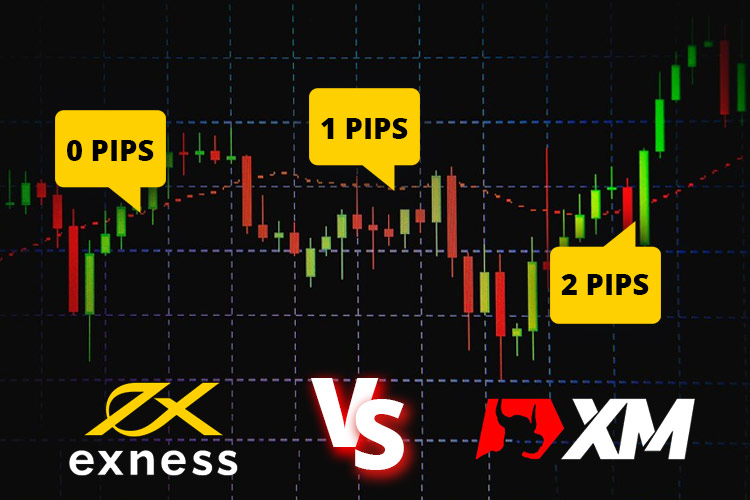
Intro to Spreads
The spread refers to the difference between the prevailing Bid and Ask prices of a specific financial instrument. The value of a spread is represented in pips as it is a term that describes the price changes occurring in an asset in the financial market. Spread can either be variable or fixed depending on the asset and the type of account opened with the broker.
Variable spreads are those that constantly change depending on market volatility and they can become narrower or wider as a result; they are also known as dynamic or floating spreads. Fixed spreads are those that remain constant more often than not which allows traders to have predictable costs of trading.
XM Spreads
XM is one of the largest forex brokers in the world with multiple awards to show for its impressive work and reputational operation as it has been existing for over one decade. The broker is safe and reliable having enjoyed significant success since its inception. It is regulated by reputable financial bodies that include the Cyprus Securities and Economic Commission (CySEC), the International Financial Services Commission (IFSC), and the Australian Securities and Investments Commission (ASIC).
XM broker offers over 20 secure payment options and negative balance protection while also gaining the trust of over five million people across 190 countries from around the world.
The table below shows an overview of the costs (both trading and non-trading) associated with XM based on the assets and the account type.
| Assets | Fee Terms | Fee Level |
| EUR/USD (representing Forex instruments) | The fees are incorporated into the spread with Standard, Ultra-low, and Micro accounts. During peak trading hours, 1.7 pips is the cost of the average spread for the Standard account. For the Zero account, there is a small spread from 0.6 pips along with a commission of $3.5 per lot. | Low |
| US Stock Fee | 0.04% with a minimum of $1 but this is exclusive to those that are under the jurisdiction of the IFSC. | Average |
| Inactivity fee | A maintenance fee of $15 is charged on any account that experiences an inactivity period of 1 year. | Low |
| Europe 50 CFD | The average spread cost is 2.6 points during peak trading hours although the fees are integrated into the spread | Low |
| S&P 500 CFD | The average spread cost during peak trading hours is 0.7 with the fees built into the spread | Low |
From the table above, it can be seen that the fees of XM are generally low thus making the broker affordable. The spread starts from 0.6 pips and serves as the foundation for the appealing trading conditions which is something beginner traders can take advantage of to minimize trading costs and maximize potential profits.
Apart from the low spread, the broker is very transparent with all its fees as there are no hidden charges and neither do traders have to worry about paying commissions when they make withdrawals. The quality of service offered by XM provides sufficient value that corresponds to the overall trading costs paid by the trader.
See Also:
Exness Spreads
Exness is a reputable CFD and forex broker that has been operating since 2008 and is regulated by top-tier financial bodies. Exness has become known over the years for its relatively low trading fees and commissions which have attracted many traders from around the world. It is also known for its lightning-fast order execution and funds withdrawal.
As a CFD broker, Exness product offering includes CFDs on cryptos, stocks, energy, metals, and over 120 currency pairs. Exness is a reliable broker that strives for transparency by providing a concise fee and commission structure that is dependent on the account type chosen by a trader. It should be noted that while the broker does not charge inactivity fees, it charges deposit fees and withdrawal fees that vary with the kind of payment method the trader chooses.
While it is prudent to be aware of every kind of fee attached to a live trading account, the most important fee remains the spread because it will play a critical role in determining the regular costs that will be associated with every trade made.
Exness has spreads from 0.1 pips and 0.3 pips depending on the account type. Once there is a spread on a specific type of instrument or account, there will be no commission charged but if the spread is 0, then the trader can expect to be charged a commission. The table below explains it better.
| Account type | Spreads | Commission |
| Standard | From 0.3 | None |
| Standard Cent | From 0.3 | None |
| Raw Spread | 0.0 | Up to $3.50 for each side per lot |
| Zero | 0.0 | From $0.2 for each side per lot |
| Pro | From 0.1 | None |
The significance of the spread is also aided by the low minimum deposit requirement that ranges between $10 and $50. On average, the spread offered by Exness is tight and ultra-competitive even by the standard of the forex industry. This combination of tight spreads and low minimum deposit fees make Exness an attractive broker for many traders that do not need sophisticated features or research tools but are only looking for a broker that can provide solid basic features at a minimal cost.
See Also:
Which One is Better?
When it comes to the spread between XM and Exness, there is no large difference as they are both low-cost brokers that afford traders the chance to trade various financial assets without having a large amount of capital. It should be noted that not all traders will have a large amount of money that they can set aside for trading as some are beginners looking to test the waters and pace themselves to understand how the markets work.
Brokers like XM and Exness make it possible for beginner traders to achieve this because with the spread from 0.6 pips and 0.3 pips respectively, beginners have a chance to open substantial trading positions without having to worry about paying exorbitant fees.
While their tight spreads indicate low trading fees overall, the opposite is true for their services as both brokers offer their clients top-notch services that are reliable and safe with various tools and features to choose from. Obviously, since the spread offered by Exness is slightly tighter than the one offered by XM, it means the trading cost at Exness will be slightly cheaper than that of XM.
While spread can play a major role in determining the kind of broker a trader wants to work with, it should not be the only factor as traders must consider their styles or strategies to determine which broker is ideal for them.

 Dedicated FREE FOREX VPS
Dedicated FREE FOREX VPS Free FOREX Virtual Private Server
Free FOREX Virtual Private Server MT4 Demo Contest, Get $500
MT4 Demo Contest, Get $500 Sign Up for an Account, Claim 60% Deposit Bonus
Sign Up for an Account, Claim 60% Deposit Bonus Free MT4/MT5 VPS 2024
Free MT4/MT5 VPS 2024 Send E-mail and Get Free Merchandise
Send E-mail and Get Free Merchandise $1K Refer a Friend Bonus for Pepperstone Pro clients
$1K Refer a Friend Bonus for Pepperstone Pro clients Maximize Your Earnings with 100% Deposit bonus
Maximize Your Earnings with 100% Deposit bonus Trade to Win, $5,000 Monthly Demo Contest
Trade to Win, $5,000 Monthly Demo Contest Claim 30% + 15% Deposit Bonus from LiteFinance
Claim 30% + 15% Deposit Bonus from LiteFinance


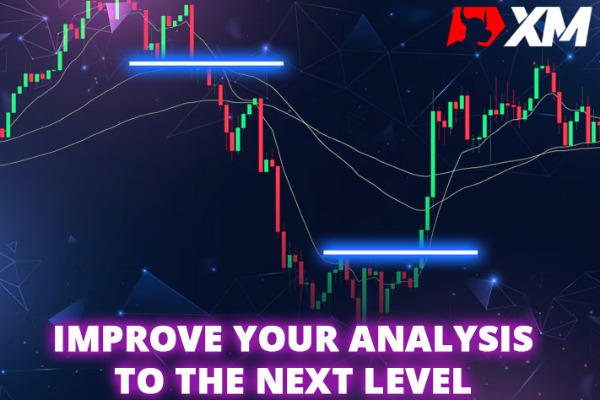
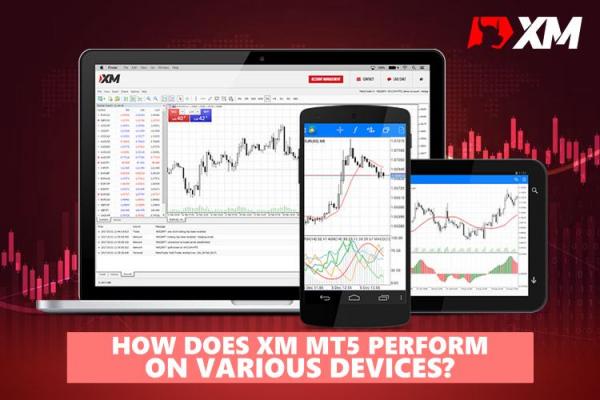
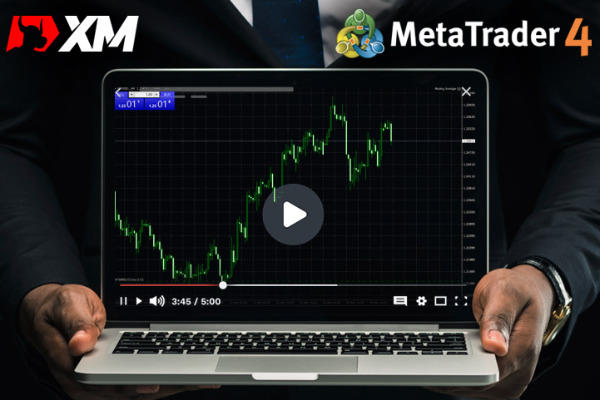

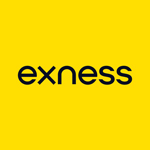
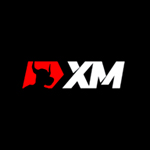

29 Comments
Rembrary
Apr 26 2023
A popular global broker with a large customer base and a good reputation, XM is a good choice for both beginners and more experienced traders. This broker offers some of the lowest fees in the industry, provides an excellent research and education section, and has a beginner-friendly trading app. This broker also has an excellent range of trading tools and offers traders bonuses and incentives.
Exness offers support for MT4, MT5 and their easy-to-use proprietary platform, Exness Terminal, available as a desktop and mobile app. In addition to technical and fundamental market analysis tools, including FXStreet News and Trading Central, Exness also hosts regional expert-led educational seminars and live webinars.
The main drawback is that XM's Indonesian clients will be trading through XM's Belize company, which has poor regulatory oversight. XM is regulated by the UK's FCA and Australia's ASIC, but XM's global clients will trade through companies regulated by the IFSC Belize, which is generally considered a weak regulator. XM does not compensate traders in the event of a company being liquidated.
Exness will be a tough choice for some traders. Even though this broker has low trading fees and minimum deposits on various trading accounts, excellent trading tools, and various trading platforms, its education and market analysis section is poor when compared to other major brokers. Indonesian clients may also be concerned because they will join through an entity regulated by the FSA, a relatively weak regulator.
Ostland
Apr 26 2023
I've heard a lot about XM and Exness which are said to be friendly for novice traders, but I still don't know much about these two brokers. Every beginner trader, in my opinion, likes trading at relatively cheap prices because they still don't have much experience in trading. but low cost is the second factor for me in recovering the trading platform, safety in trading is also an important aspect I said. because the more regulations these two brokers have, the more traders feel safe depositing their money.
Do you think this XM and Exness broker deserves to be called a safe broker? Are both brokers licensed (or authorized) and regulated? if anyone knows who can help answer yes... thanks.
Urashini
Apr 26 2023
@Ostland: XM, as a group of online regulated brokers, has been in the industry since 2009. XM is regulated by ASIC Australia, and DFSA Dubai, and is registered for exit passport to the FCA, which means that XM's UK clients will join through the Cyprus Securities and Exchange Commission (CySEC). ). CySEC is considered a strong regulator and ensures that brokers treat their clients fairly. As required by CySEC, XM protects its traders by: Segregating its client funds from corporate funds at top banks, Providing traders with automatic negative balance protection, which means traders cannot lose more than their initial deposit. in addition the broker participates in the investor scheme so that residents of EEA countries such as the UK receive investor protection of up to 20,000 EUR.
Exness is a popular global broker with nine different trading accounts and one of the lowest fee Cent Accounts in the industry. Exness also has 100+ Forex pairs to trade, more than most other brokers, and a variety of trading platforms and tools. Global traders will trade authorized and regulated by the FSA in Seychelles. Even though traders will join through the Seychelles FSA, we still consider Exness a safe broker to trade with. First, it holds licenses from a number of regulators around the world. Second, it provides all clients with negative balance protection, meaning traders cannot lose more than their initial deposit. Finally, it is regularly audited by Deloitte, one of the most reputable audit firms in the world.
So I can conclude that both XM and Exness are included in brokers that are safe for trading and have been regulated by international regulators in each region.
Taeyang
Apr 26 2023
Actually I am very interested in this XM broker, I often read articles related to this broker. Starting from guaranteed trading security at this broker, to the many account choices offered by Xm.
All XM accounts, except stock accounts, have a minimum deposit of 5 USD, making them accessible to beginners. No commission is charged for Forex trading on three of the five accounts, and traders will find spreads between 0.8 pips and 1.7 pips (EUR/USD), depending on the account. This Xm broker also provides an XM Zero account which offers trading with low spreads starting from 0.10 pips. how low the account spreads this account offers.
for deposit or withdrawal issues, I don't know whether this account is good or not, because I have no experience with both deposits and withdrawals. Even though this article has explained that withdrawing at this broker is quite easy and instant and does not incur any fees, I am still curious.
If there is a problem when withdrawing, namely your funds cannot be withdrawn to your account, is there a solution to solve this? what usually causes the problem to occur? please explain if anyone knows.
Rembrary
Apr 26 2023
@Taeyang: Actually I am very interested in this XM broker, I often read articles related to this broker. Starting from guaranteed trading security at this broker, to the many account choices offered by Xm.
All XM accounts, except stock accounts, have a minimum deposit of 5 USD, making them accessible to beginners. No commission is charged for Forex trading on three of the five accounts, and traders will find spreads between 0.8 pips and 1.7 pips (EUR/USD), depending on the account. This Xm broker also provides an XM Zero account which offers trading with low spreads starting from 0.10 pips. how low the account spreads this account offers.
for deposit or withdrawal issues, I don't know whether this account is good or not, because I have no experience with both deposits and withdrawals. Even though this article has explained that withdrawing at this broker is quite easy and instant and does not incur any fees, I am still curious.
If there is a problem when withdrawing, namely your funds cannot be withdrawn to your account, is there a solution to solve this? what usually causes the problem to occur? please explain as far as I know in withdrawals, all withdrawal requests will be resolved within 24 working hours; however, all submitted withdrawal requests will be instantly reflected in the client's trading account as pending withdrawals. If the client's withdrawal method is incorrect, the client's request will be processed according to the Priority Withdrawal Procedure described above.
All client withdrawal requests will be processed in the currency in which the deposit was originally made. If the deposit currency is different from the transfer currency, the transfer amount will be converted by XM to the transfer currency at the prevailing exchange rate.
Apart from that, I chose the withdrawal time when the broker was not operating, maybe because there was a national holiday too. So this can also cause the withdrawal process to take a long time, which must be processed within 24 hours to be processed. Maybe this can be noticed when you want to make a withdrawal, sometimes we traders don't know about it.
Dalton
Apr 26 2023
I have been an Exness client for about 2 years. I found that his trading fees are slightly higher than average on his Standard account, but much lower than average on his Pro account.
As you can see from the table above, trading costs are slightly higher than average on the three Standard Accounts – most entry-level accounts offered by leading brokers usually have a trading fee of 9 USD per lot EUR/USD traded. However, with no real minimum deposit requirement, this is still a great account for novice traders. Fees are very low on six Pro accounts, with trading fees of only 6 – 7 USD per lot of EUR/USD traded.
The Pro Account is a single instant execution Account offered by Exness, has a minimum deposit of 500 USD and spreads from 0.6 pips (EUR/USD), but guarantees no slippage. This account is available on the MT5/Exness trader web.
Patrick
Apr 26 2023
Exness offers nine account types on the MT4 and MT5 platforms – more than most brokers. These offers range from a Standard Cent Account with no minimum deposit to an optional Pro Account with tight spreads, market execution and a minimum deposit starting at 500 USD. The average spread offered is as low as 0.6 pips, this is a great account for both beginners and professional Forex traders. There are also Raw Spread and Zero Accounts with spreads starting from 0 pips.
XM offers three account types suitable for beginners and experienced traders. All XM accounts have a minimum deposit of 5 USD, making them accessible to beginners. Spreads start at 1.6 pips on EUR/USD on its two commission-free accounts but drop to 0 pips on its Zero Account in return for a commission of 7 USD (round turn).
If I were asked to choose between Xm and Exness, I have been interested in the Exness broker for a long time because the number of accounts offered is quite varied and the spreads are also lower than XM. but I'm still hesitant to try it because my experience in trading is quite beginner. I'm afraid I can't solve the problem if there is a problem in trading.
But today I make sure to try to register first. it only took me about 5 minutes to open an account at Exness. but I'm confused about the next process, which is account verification...can you please explain what needs to be prepared for account verification? Can my account be used for trading after verification? Along with XM Verification, guys, to compare which one is the best, because after all, as a trader, I need consideration in choosing a broker.
Finlay
Apr 26 2023
@Patrick: Exness offers nine account types on the MT4 and MT5 platforms – more than most brokers. These offers range from a Standard Cent Account with no minimum deposit to an optional Pro Account with tight spreads, market execution and a minimum deposit starting at 500 USD. The average spread offered is as low as 0.6 pips, this is a great account for both beginners and professional Forex traders. There are also Raw Spread and Zero Accounts with spreads starting from 0 pips.
XM offers three account types suitable for beginners and experienced traders. All XM accounts have a minimum deposit of 5 USD, making them accessible to beginners. Spreads start at 1.6 pips on EUR/USD on its two commission-free accounts but drop to 0 pips on its Zero Account in return for a commission of 7 USD (round turn).
If I were asked to choose between Xm and Exness, I have been interested in the Exness broker for a long time because the number of accounts offered is quite varied and the spreads are also lower than XM. but I'm still hesitant to try it because my experience in trading is quite beginner. I'm afraid I can't solve the problem if there is a problem in trading.
But today I make sure to try to register first. it only took me about 5 minutes to open an account at Exness. but I'm confused about the next process, which is account verification...can you please explain what needs to be prepared for account verification? Can my account be used for trading after verification? Along with XM Verification, guys, to compare which one is the best, because after all, as a trader, I need consideration in choosing a broker.
Diego
Apr 27 2023
@Patrick: I think the process of opening an account and verifying it with Exness tends to be straightforward. Our account is verified within 48 hours, which is longer than the industry average, but we can make a deposit and start trading while waiting for the verification period.
The verification documents that must be prepared are quite easy and not complicated in my opinion. These include: Your Economic Profile – This is a short questionnaire detailing your economics knowledge and financial background. Proof of Identification – Exness accepts all government-issued identification documents such as a Passport, KTP, Driver's License, or other government-issued identification. Proof of Address – Documents of proof of residence/address must be issued in the name of the account holder within the last 6 months and must contain the merchant's full name, current residential address, date of issue, and issuing authority.
Once verification is complete, traders can deposit up to 50,000 USD. however please note that new accounts are ready for trading after two days. If your Exness account is not verified within 30 days of account registration, the deposit, transfer, and trade functions will no longer be available.
Actually, XM's verification process is almost the same as Exness, namely a color copy of a passport or other official document issued by the relevant party (eg driver's license, KTP, etc.). This document should contain the client's full name, issue, and expiration date, the client's date and place of birth or the client's tax file number, and the client's signature. Household bills (eg electricity, gas, water, telephone, oil, internet and/or cable TV, checking account) dated no later than the last 6 months with the client's address listed.
Sweety
Apr 26 2023
Previously, thank you for your explanation, I was quite helped to register an account at the broker. Yes indeed when I read both XM and Exness are not much different in the verification process. but I have a question, Why do I have to submit documents for account verification? Do I need to upload my documents again if I open a new trading account and my first account has been verified? Can I update my personal information?
Xiamore
Apr 26 2023
@Sweety: As licensed companies, XM and Exness must follow the rules of their respective regulatory authorities. This broker is registered under the name Exness (Cy) Ltd and officially regulated by CySEC. CySEC is the supervisory and regulatory authority for investment services companies in Cyprus. CySEC is also a member of the European Securities and Markets Authority (ESMA). Whereas XM XM is regulated by the UK FCA and ASIC Australia, but XM's global clients will trade through companies regulated by IFSC Belize.
All regulators Included in this rule is obtaining documents from the client in accordance with KYC (Know Your Client), including a valid KTP and a new household bill (at least within the last 6 months) to verify the client's residential address.
If you have done the verification process and want to open a trading account, your new account will be verified automatically, as long as you use the same personal/contact details as in your previous account. If you wish to update your address, please send the request to the respective broker's email or to the support center to further ensure the best course of action.
Charlotte
Apr 26 2023
I just entered the world of trading at the beginning of 2023, even though I just learned how to deposit. I learned a lot about trading before on websites and participated in many online webinars provided by Exness educational tools.
I was really impressed with the various deposit and withdrawal methods that Exness offers. Also, I like that exness offers instant and no-fee deposits and withdrawals, making funding my account (and withdrawing profits) much cheaper and easier than most other brokers.
I think Exness excels at this service.
Robert
Apr 26 2023
@Charlotte: Hello, brother, I also agree that Exness offers its customers deposits and withdrawals that are hassle-free and that there are no fees. This is what makes Exness one of the brokers that provides the fastest service for its customers. Most traders, especially beginners, are definitely worried about their funds if it takes too long to process, both in terms of deposits and withdrawals.
Why do I say this? Because I have made deposits and withdrawals on the Exness application. In my experience in this matter, if you make a deposit or withdrawal at Exness the fastest you only need 24 hours for the funds to be received. These withdrawal times are faster than the industry average.
Zarrel
Apr 26 2023
@Charlotte:
I just want to add yes... maybe there are people here who are interested in Exness but are still hesitant to put their money in Exness. Everyone has their own worries, maybe one is afraid that the currency in their country is not included in the base currency at this broker. Well at Exnees you can get rid of such worries, why? Because in this application, you can open an account at Exness, and are given a choice of more than 40 base currencies. Most other brokers only offer 5 – 10 base currencies, so Exness really stands out in this regard. This is a huge advantage for traders around the world who will most likely have bank accounts in their respective currencies so they can avoid conversion fees.
Funds can be deposited in a number of different ways including Credit Cards, bank transfers, Neteller, Skrill and several other online payment systems through the Exness payment portal.
Zack
Jun 16 2023
So, when it comes to brokers like XM and Exness, they're all about providing an opportunity for traders to enter the market without needing a massive amount of capital, right? I mean, not all of us have stacks of cash just lying around to invest. We're just starting out and trying to learn the ropes, ya know?
Now, these brokers offer some pretty attractive spreads, like XM with a spread from 0.6 pips and Exness going even lower at 0.3 pips. It's all about keeping the fees low and accessible for us beginners. But here's the thing that got me wondering: do these brokers also get a piece of the spread? Do they earn some profit from it, or is it just a one-way street for us traders?
I mean, it makes sense that they need to make money to keep the lights on and provide us with their services, right? But I'm curious to know how they strike a balance between earning their keep and offering us affordable spreads. Are there any specific factors that determine the spread they offer, or is it a standard thing across the board?
So, spill the beans, mate! Do brokers like XM and Exness make some dough from the spread, or is it all about looking out for us traders and keeping the fees as low as possible? I'd love to know how they navigate this whole spread business and ensure it's fair and reasonable for everyone involved.
Leandro
Jun 19 2023
@Zack: Absolutely, mate! XM and Exness are indeed focused on providing opportunities for traders with smaller capital. While they do earn some profit from the spread, they strive to keep it as low as possible for us traders. The spread, which is the difference between the bid and ask price, acts as a fee for executing trades.
These brokers strike a balance between earning their keep and offering competitive spreads. Factors like market liquidity, volatility, and trading conditions influence the spreads they offer. XM and Exness aim to ensure fair and reasonable pricing, creating a win-win situation for both traders and themselves.
So, while they do make some dough from the spread, they prioritize affordability and accessibility. Their commitment to transparency and fair pricing has earned them a solid reputation in the industry. Rest assured, they've got your back, mate, and are dedicated to looking out for your best interests as you navigate the trading world!
Fajar
Jun 24 2023
Just want to ask these. Apart from comparing the spread, there are other important factors to consider when evaluating brokers like XM and Exness. Firstly, what trading platforms do they offer, and are they user-friendly and suitable for your trading style? Secondly, do they provide a wide range of trading instruments and markets that align with your interests? Thirdly, what is the minimum deposit requirement for each broker, and does it fit within your budget? Additionally, it's important to consider any additional fees or commissions charged by these brokers. How is their customer support, and do they offer responsive assistance when you need it? Do they provide educational resources or research materials to enhance your trading knowledge? Moreover, what is the overall reputation and credibility of XM and Exness in the industry? Are they regulated by reputable authorities?
Gerard
Jun 25 2023
@Fajar: When evaluating brokers like XM and Exness, apart from comparing the spread, there are other important factors to consider. Firstly, XM offers the popular MetaTrader 4 and MetaTrader 5 platforms, known for their user-friendly interfaces and extensive trading tools. Exness also provides the MetaTrader platforms along with their proprietary WebTrader platform. It's essential to choose a platform that suits your trading style and preferences.
Secondly, both brokers offer a wide range of trading instruments, including forex, stocks, indices, commodities, and cryptocurrencies. However, XM provides a more diverse ion of financial instruments, including over 1,000 CFDs, which might be appealing if you have specific interests or want to explore various markets.
Thirdly, the minimum deposit requirement for XM is $5, while Exness has different account types with varying minimum deposit requirements, starting from $1. Consider your budget and choose a broker that aligns with your financial resources.
Additionally, both XM and Exness have competitive fee structures, with no commissions on forex trading and tight spreads. They also provide reliable customer support through various channels, including live chat, email, and phone.
Both brokers offer educational resources, such as webinars, tutorials, and market analysis, to enhance traders' knowledge and skills.
Lastly, both XM and Exness are reputable brokers and regulated by respected authorities. XM is regulated by the Financial Conduct Authority (FCA) and the Australian Securities and Investments Commission (ASIC), while Exness is regulated by the Cyprus Securities and Exchange Commission (CySEC) and the Financial Conduct Authority (FCA).
Billie Anna
Jul 5 2023
Hey, I have to say that I really dig Exness as a trading platform. I mean, they have some killer features that I'm really tempted to, especially in terms of their leverage, which is actually higher than what's allowed in my own country, the US.
So after reading this article, I decided to give their demo account a try. I trained with him for several months and finally felt ready to open a live account. I followed all the steps outlined in the article, but when I tried to open a live account, it was rejected. I was disappointed and finally contacted Exness customer support.
They explained to me that they do not accept US traders. I was a bit confused because they let me open a demo account in the first place, but didn't let me open a live account. Do you know why this is? What's the problem with Exness not accepting US traders? Is XM also like that guys?
Emma P
Jul 6 2023
That's right, not many brokers accept US traders. According to the articles I read, it is known that getting a US license is very difficult because the requirements are quite strict. One of the main reasons why forex brokers do not accept US clients is because of the strict regulations imposed by the US government. The US government has implemented a number of regulations regarding forex brokers, including the Dodd-Frank Act which was introduced in 2010. This law requires forex brokers to register with the Commodity Futures Trading Commission (CFTC) and the National Futures Association (NFA) which can be a lengthy and expensive process.
In addition, forex brokers are also required to meet a number of other requirements, including maintaining minimum capital requirements and submitting periodic financial reports to the authorities. These regulations can be difficult for forex brokers to comply with, which is why many prefer not to accept US clients.
Well despite the many rules in the US, it is important to remember that these regulations are designed to protect traders and ensure that the forex market operates fairly and transparently. As a result, it is important to choose a regulated and trustworthy forex broker, even if they do not accept US clients. Yeah, even though Exness Broker can't penetrate the US market, it can't be denied that it is a good broker. Exness and FP Markets are highly regulated brokers with a good reputation. The companies are recognized globally and offer good trading conditions for professional or regular traders. these brokers have one of the best and most good study and research materials for trading EAs.
However, you still need an account that has US regulations, you have to read this (Forex Brokers Offering Us Clients)
Kalla Johnson
Jul 7 2023
Hey bros! Too bad you have experience with Exness. So here's the deal with Exness not accepting US traders. The thing is, Exness is a global brokerage company, but they have certain regulatory and policy limitations. One of those limitations is that they do not accept clients from the United States.
Now, you may be wondering why they let you open a demo account. Well, demo accounts are often available to traders all over the world, regardless of their location. This is a way for traders to get a feel for the platform and test their strategies without risking real money. But when opening a live account, Exness must comply with the regulations set by the authorities in the countries where they operate. Exness has licenses in various international regions such as SFSA (Seychelles), CBCS (Curaçao), FSC (BVI), FSCA (SA), CySEC (Cyprus), and FCA (UK). unfortunately, it's not all in the US territory, meaning they can't accept traders from the US.
For the FP Markets broker, the check method is the same, or you can contact the broker directly.
Siegfried
Jul 8 2023
Actually, here I just want to add the reason why forex brokers don't accept US clients is because of the higher costs associated with doing business in the US. The US is known to have a higher cost of living and wages than many other countries, meaning forex brokers have to pay their employees more, resulting in higher operating costs.
In addition, forex brokers also have to pay higher taxes and fees to operate in the US, which can be a significant burden for smaller companies. As a result, many forex brokers choose to focus on other markets where the costs of doing business are lower.
Apart from these reasons, In the US, forex brokers are only allowed to offer a maximum leverage of 50:1 on major currency pairs and 20:1 on minor currency pairs. This is much lower than the leverage that is offered by brokers in other countries, such as Australia and Europe, where leverage of up to 500:1 is available. The restrictions on leverage in the US can make it difficult for traders to make a profit, as they are not able to take advantage of the same level of leverage that is available in other countries. As a result, many traders choose to use offshore forex brokers that offer higher leverage, which is why many US forex brokers do not accept US clients.
This is all done to protect traders from fraud and cybercrime.
Henderson
Jul 14 2023
Based on XM's impressive track record, extensive regulation, and global reach, it's clear they prioritize safety and reliability for their clients. With over 20 secure payment options available, choosing the right one can make a difference in your overall trading experience. Considering their reputation and the variety of payment options offered, which payment method would you suggest as the best choice when trading with XM? Factors to consider might include transaction speed, convenience, low fees, and availability in multiple countries. It would be great to hear your insights on ing the most suitable payment method for traders looking to join the trusted XM broker.
Verra
Oct 22 2023
@Henderson: Choosing the most suitable payment method when trading with XM hinges on your unique preferences and requirements. XM provides a diverse array of payment options, encompassing bank transfers, credit/debit cards, and e-wallets. To arrive at an informed decision, take into account various factors. Evaluate the convenience of the payment method, the presence of transaction fees, the speed of processing, and the level of security it offers, particularly in safeguarding against fraud and unauthorized access. Additionally, check for the method's availability in your region, as certain options may be restricted geographically. Keep an eye out for any bonuses or promotions tied to specific payment methods, and consider the ease and cost associated with withdrawing funds using your chosen option. The best payment method for trading with XM varies from trader to trader, so it's crucial to select the one that aligns with your individual circumstances and trading strategy.
Heimdall
Aug 2 2023
Good afternoon, everyone! I'd like to share my thoughts regarding XM and Exness brokers. As a trader based in the Americas, my top priority is finding a broker that prioritizes security and protection for traders in our region. It's crucial because trading with an unlicensed broker in our area might expose traders to potential regulatory issues from authorities in different regions.
In reality, this isn't a major concern as long as we're under proper supervision. However, I am worried about the practice of transferring customers to unregulated offshore entities. After reading the comments on this article, I've learned that Exness doesn't have regulation from American authorities. What about XM? Is XM licensed in the US? I'd appreciate any insights on this.
Now, even though this question may not be directly related to the article's topic, I hope to receive some guidance. How can we determine the best forex broker in America? And for beginner traders in the US, what would be the most suitable forex broker for them?
Hyuga
Aug 4 2023
Hello traders! To the best of my knowledge, XM is a regulated broker in various regions and holds competent licenses. These encompass CySEC (Cyprus), ASIC (Australia), DFSA (Dubai, United Arab Emirates), FCA (UK), and FSC (Belize). For EU clients, the broker regulator offers a coverage of up to €20k, while for other clients, it is $0. It's important to note that Belize is a small country situated on the east coast of Central America, sharing borders with Mexico and Guatemala. While this broker might be considered secure for Central America, it still requires specific regulations to operate in the US.
The United States boasts the world's most stringent financial regulation. Each client is required to complete an exhaustive administrative checklist and undergo an extensive verification process. Brokers from other regions are not allowed to accept clients from the US. The leverage applicable to US-regulated brokers stands at 1:50. The United States has multiple regulatory bodies, with the most prominent ones being the Commodity Futures Trading Commission (CFTC), Securities and Exchange Commission (SEC), Financial Industry Regulatory Authority (FINRA), and the National Futures Association (NFA).
When it comes to finding the best forex broker in the United States, the process is quite similar to selecting the right broker in general. Besides ensuring that a forex broker is open to client registration from the United States, it's crucial to verify its compliance with regulations, minimum deposit requirements, spreads, leverage options, available payment methods, and other trade-related factors that might impact your trading strategy. Additionally, confirming the broker's credibility and having access to reliable customer support are also essential.
For beginners in search of the right broker to begin forex trading in the United States, consider aspects such as a low minimum deposit, availability of a demo account, and educational resources. Furthermore, prioritize brokers that offer responsive customer service since, as a beginner, you may require assistance and guidance regarding brokerage services that you may not yet fully grasp.
Read more: Comparing US and Offshore Forex Brokers
Sally
Oct 26 2023
It's a bit of a head-scratcher for traders. I mean, before I stumbled upon this article, I had no clue that the spreads offered by these brokers could be so changeable, all swayed by the market's ups and downs. Those ads always make it sound like you're getting rock-bottom spreads, and then boom, during peak trading hours, they shoot up. It's a letdown, especially when you're counting on the market's peak hours to bring in some exciting volatility that could lead to solid profits. So, here's the real question: Why on earth do spreads tend to get wider during these peak times, and what's causing this, especially when they bundle fees into the spread for accounts like Standard, Ultra-low, and Micro? It's a real head-scratcher, isn't it?
Maya
Mar 21 2024
It's quite puzzling for traders. I mean, before stumbling upon this article, I had no idea that the spreads offered by brokers could fluctuate so much, influenced by the market's constant ups and downs. Those advertisements always promise you rock-bottom spreads, but then, during peak trading hours, they suddenly skyrocket. It's disappointing, especially when you're banking on those peak hours to bring in some thrilling volatility that could potentially yield significant profits.
So, here's the burning question: Why do spreads tend to widen during these peak times, and what exactly causes this phenomenon, especially when brokers incorporate fees into the spread for accounts like Standard, Ultra-low, and Micro? It's truly perplexing, isn't it?
Herry
Mar 25 2024
The reason spreads tend to get wider during peak trading hours is mainly due to increased trading activity and reduced liquidity. When there's a surge in trading volume, but fewer buyers and sellers in the market, it becomes more challenging for brokers to match orders at the desired price. As a result, they widen the spreads to compensate for the increased risk and potential costs associated with executing trades during these volatile periods. Additionally, brokers may also adjust spreads to reflect market conditions and manage their exposure to risk. This phenomenon can be particularly frustrating for traders who were hoping to capitalize on heightened market volatility during peak hours.